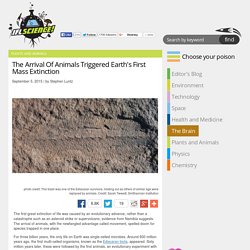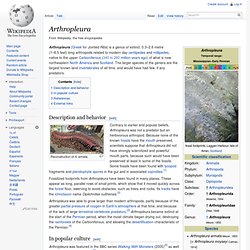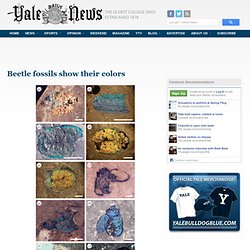

There are 5 known mass extinctions, the last occurring 65 MYA. Today, we are going through the sixth mass extinction event with an estimated 27,000 species lost per year.
Ancient Reptiles. Ancient Sea Life. Recent Extinctions (1600 - 2021) The Arrival Of Animals Triggered Earth's First Mass Extinction. The first great extinction of life was caused by an evolutionary advance, rather than a catastrophe such as an asteroid strike or supervolcano, evidence from Namibia suggests.

The arrival of animals, with the newfangled advantage called movement, spelled doom for species trapped in one place. For three billion years, the only life on Earth was single-celled microbes. Around 600 million years ago, the first multi-celled organisms, known as the Ediacaran biota, appeared. Sixty million years later, these were followed by the first animals, an evolutionary experiment with a bewildering range of body types known as the Cambrian explosion.
Extinction event. The blue graph shows the apparent percentage (not the absolute number) of marine animalgenera becoming extinct during any given time interval.

It does not represent all marine species, just those that are readily fossilized. Arthropleura. Arthropleura (Greek for Jointed Ribs) is a genus of extinct, 0.3–2.6 metre (1–8.5 feet) long arthropods related to modern day centipedes and millipedes, native to the upper Carboniferous (340 to 280 million years ago) of what is now northeastern North America and Scotland.

The larger species of the genera are the largest known land invertebrates of all time, and would have had few, if any predators. Description and behavior[edit] Reconstruction of A. armata. Contrary to earlier and popular beliefs, Arthropleura was not a predator but an herbivorous arthropod. Because none of the known fossils have the mouth preserved, scientists suppose that Arthropleura did not have strongly sclerotized and powerful mouth parts, because such would have been preserved at least in some of the fossils.
Fossilized footprints from Arthropleura have been found in many places. In popular culture[edit] References[edit] New Cause Behind Three Mysterious Mass Extinctions Revealed. When the phrase “mass extinction” is mentioned, many think of enormous volcanism or asteroid impacts wiping out a large chunk of Earth’s life.

There have been five in the history of the planet, and thanks to the detrimental nature of human activity, we are currently in the sixth. The causes behind each are complex and sometimes highly debatable, and a new study published in the journal Gondwana Research reveals that a new perpetrator has emerged: a global depletion in the element selenium. When the rate of extinction increases greatly with respect to the rate of new species generation (speciation), an extinction event is said to be occurring. Mass extinctions occur when this difference is seen to be extreme, one that has increased at a rapid rate.
Great American Interchange. Paleozoographic event resulting from the formation of the Isthmus of Panama Examples of migrant species in both Americas.

Olive green silhouettes denote North American species with South American ancestors; blue silhouettes denote South American species of North American origin. The occurrence of the interchange was first discussed in 1876 by the "father of biogeography", Alfred Russel Wallace.[2][3] Wallace had spent 1848–1852 exploring and collecting specimens in the Amazon basin. Others who made significant contributions to understanding the event in the century that followed include Florentino Ameghino, W. D. Analogous interchanges occurred earlier in the Cenozoic, when the formerly isolated land masses of India[6] and Africa[7] made contact with Eurasia c. 50 and 30 Ma ago, respectively.
South America's endemic fauna[edit] The giant anteater, Myrmecophaga tridactyla, the largest living descendant of South American's early Cenozoic mammalian fauna Island-hopping 'waif dispersers'[edit] Beetle fossils show their colors. The fossils of beetles may open the door to understanding what exactly ancient organisms looked like.

Maria McNamara, a postdoctoral fellow in the Yale Department of Geology and Geophysics, used fossilized beetles to show how colors of insects have changed over time, adding to scientists’ understanding of ancient insects’ appearance. McNamara, with help from her colleagues at the Peabody Museum, the Department of Applied Physics and University College Dublin, studied the cuticles of fossilized beetle remains ranging from 15 million to 47 million years old.
A Tiny Amphibian Trapped in Amber Is a New Species. The only known salamander from the Caribbean is preserved in a drop of golden sap that formed 20 million years ago.

This story ran in the April 2016 issue of National Geographic magazine. More than 20 million years ago a salamander hatchling less than three-quarters of an inch long met a traumatic end. A hungry predator—perhaps a spider or bird or snake—ripped off its left front leg, leaving the stub of a bone jutting from its side.
The salamander managed to escape but then must have fallen into a pool of tree resin, which preserved the tiny amphibian as it hardened into amber. George Poinar, Jr., a biologist at Oregon State University who specializes in amber, believes he collected this specimen in the Dominican Republic years ago without realizing that it was unique. It has since been identified as a new genus, based on visible physical features such as the large webbed front and back feet. . © 1996-2016 National Geographic Society.
Buy Tickets.